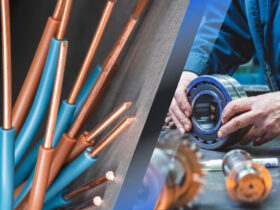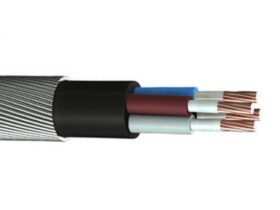Introduction:
In the realm of electrical installations, selecting the right wiring material for your household is crucial for ensuring safe and efficient power distribution. Various types of wiring materials are available, each with its unique characteristics and applications. In this blog, we will explore the most common household wiring materials and delve into their uses and benefits. Additionally, we will highlight the contributions of Relemac Cables, a reputable manufacturer in the industry. So let’s embark on a journey to understand the world of household wiring.
PVC insulated cables are widely used in residential wiring applications. The insulation material, PVC, provides excellent electrical insulation, mechanical protection, and resistance to moisture, chemicals, and heat. These cables are commonly employed in fixed installations, such as concealed wiring in walls, conduits, and surface wiring. PVC insulated cables are easy to install, cost-effective, and have a long lifespan, making them a popular choice for residential projects.
FR PVC insulated cables are an enhanced version of PVC cables with an added flame-retardant property. This makes them suitable for applications where fire safety is a concern, such as high-rise buildings, commercial complexes, and public spaces. In the event of a fire, FR PVC cables release less toxic smoke and reduce the spread of flames, providing valuable time for safe evacuation. These cables are known for their durability, flexibility, and resistance to chemicals and sunlight.
FRLS cables are designed to offer superior fire safety measures compared to conventional PVC or FR PVC cables. These cables have low smoke and low toxicity characteristics, making them suitable for installations in enclosed areas where the risk of fire hazards is high. FRLS cables restrict the release of harmful gases, minimize smoke generation, and help maintain visibility during emergencies. They are commonly used in schools, hospitals, theaters, and residential buildings.
XLPE insulated cables are known for their exceptional electrical and mechanical properties, making them ideal for both residential and industrial applications. XLPE insulation provides superior resistance to heat, moisture, and chemical substances, ensuring reliable power transmission. These cables are widely used in underground installations, outdoor applications, and areas where high temperature or heavy mechanical stress is anticipated. XLPE cables offer increased power carrying capacity, low dielectric losses, and enhanced thermal stability.
HFFR cables are gaining popularity due to their environment-friendly and safety-conscious properties. These cables are manufactured using halogen-free materials, eliminating the release of toxic gases and corrosive fumes in the event of a fire. HFFR cables are typically used in public buildings, hospitals, schools, and areas where human safety and the protection of electronic equipment are paramount. They exhibit excellent flame-retardant characteristics, low smoke emission, and minimal toxicity, contributing to a safer and healthier environment.
- Relemac Cables: Delivering Quality and Reliability
When it comes to reliable household wiring solutions, Relemac Cables is a trusted name in the industry. With a focus on innovation, quality, and customer satisfaction, Relemac offers a wide range of wiring materials that meet international standards. Their commitment to excellence is reflected in the rigorous testing procedures, state-of-the-art manufacturing facilities, and adherence to strict quality control measures.
Relemac Cables prioritize safety, durability, and performance in their products. Their range of wiring materials caters to various residential and commercial applications, ensuring efficient power distribution and long-term reliability. By choosing Relemac Cables, homeowners and electrical professionals can have confidence in the quality and performance of their wiring installations.
Conclusion:
Selecting the right wiring material is crucial for safe and efficient power distribution in residential settings. PVC insulated cables, FR PVC cables, FRLS cables, XLPE insulated cables, HFFR cables, and other types offer unique benefits and cater to specific requirements. Understanding the characteristics and applications of these wiring materials is essential for making informed decisions during electrical installations.
In this blog, we explored common types of household wiring materials and their uses. We also highlighted the contributions of Relemac Cables, a reputable manufacturer that prioritizes quality, reliability, and customer satisfaction. By choosing high-quality wiring materials and partnering with trusted manufacturers like Relemac Cables, homeowners can ensure a safe and efficient electrical system that meets their needs for years to come.














Leave a Reply